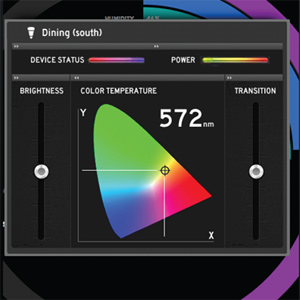 NEWS
NEWS
 NEWS
NEWS
 NEWS
NEWS
![]() Smart home automation is one of the latest and greatest examples of future technology. The homes of today are getting smarter. Hence the concept of “smart homes” is becoming more widely known. In a smart home, latest technologies are bundled so you benefit from greater convenience, safety and less power consumption.
Smart home automation is one of the latest and greatest examples of future technology. The homes of today are getting smarter. Hence the concept of “smart homes” is becoming more widely known. In a smart home, latest technologies are bundled so you benefit from greater convenience, safety and less power consumption.
The major disadvantage of today’s smart home technology is that they require a human interaction or a carefully laid set of scripts and customization. For example, to play a song built in the refrigerator while you are working in the kitchen, you need to either use a remote control or push a button.
Marshall T. Rose was recently at the O’Reilly Video Studio to discuss The Thing System–an open-source project built on Node.js is both a home automation and Internet of Things control solution.
Where The Thing System differs from current smart home technology is that it is “smarter” and based on automation and customization. The Thing System boasts an impressive array of functionality with devices and one that can adapt to a variety of devices over several wireless protocols. Using machine learning, it anticipates the user’s behaviors. According to Rose, it is very difficult for the various tools that are connected to our home to communicate each other, and are often require different remotes to be able to interact with them. The solution – universal protocol that called The Thing System.
“My definition of success is to go to a zero remote control environment. I want to stop the madness of having a dozen different remote controls on the coffee table. Even though many of them have been replaced by smartphone apps, it still is silly,” says Rose.
How the system works?
As Rose points out, there are interesting devices that help automate all kinds of tasks in our home, but none are compatible with another device from another manufacturer. Not only that, each manufacturer tends to offer a closed ecosystem that makes it difficult interoperability between automation and home automation solutions for home.
The example is the Nest thermostats and NETAMO air sensors, two of the most interesting home automation products. Both offer great benefits, but it is impossible to have them communicate with each other and collaborate. That’s where The Thing System comes into picture.
The technology is a software system implemented in node.js, which is server-side JavaScript. It requires an always on computer and can be install directly or through steward distribution (the team called the system as steward) for the Raspberry Pi and BeagleBone platforms. The steward architecture is made easy for third-parties to add “device-specific” drivers for automation. It pre-configure with dozens of drivers for real-world products.
With these drivers, the steward talk to devices through a controller using whatever protocol the controller implements. It implements a Simple Thing Protocol that is also implemented on the smart device and provides a gateway into the peripheral. Rose and the team provided external APIs for client developers along with internal APIs in the steward to make it easier to use your existing investment more effectively.
“The job of the Steward is to discover your things. You never have to type in an IP address, it scans your network and knows what devices you have and figures out how to talk to them and has a rules engine for various actions,” Marshall said. On The Thing System website, you can see the progress and which devices still has to integrate into the Steward.
The Thing System website said an example of automation would be that the lights know what the solar time is in the house, and if the motion detector gets a ping, then the lights go on. Further, if none of the family members’ presence indicators (e.g., watches, fobs, and so on) are visible, then the PTZ cam in the room starts recording, and the home goes into ‘attention mode’. Another example of automation would be that when the leak detector triggers an over-threshold event that the home goes into ‘attention mode’. However, if it’s solar night, the nursery is exempt from the alert light and sound, because it’s better not to wake the baby at two in the morning, particularly if there’s a leak that you need to deal with.
Many of the most familiar brands are currently offering home automation solutions in select markets. AT&T offers two packages for its DigitalLife home solution to monitor leaks, controls water consumption, and energy package, which allows you to remotely control lights and temperature. GE offers home automation portfolio such as a monitoring package to control sensors and alarms.
Sprāv, a wireless water and energy meter for your shower not only restrict water flow for you to save energy, but it delivers visual and audible cues to let you know how much water and energy you are consuming. Neurio is another Internet of Things home intelligence system that turns your ordinary appliances into smart ones using WiFi power sensor and a cloud service, loaded with smart pattern detection algorithms.
THANK YOU